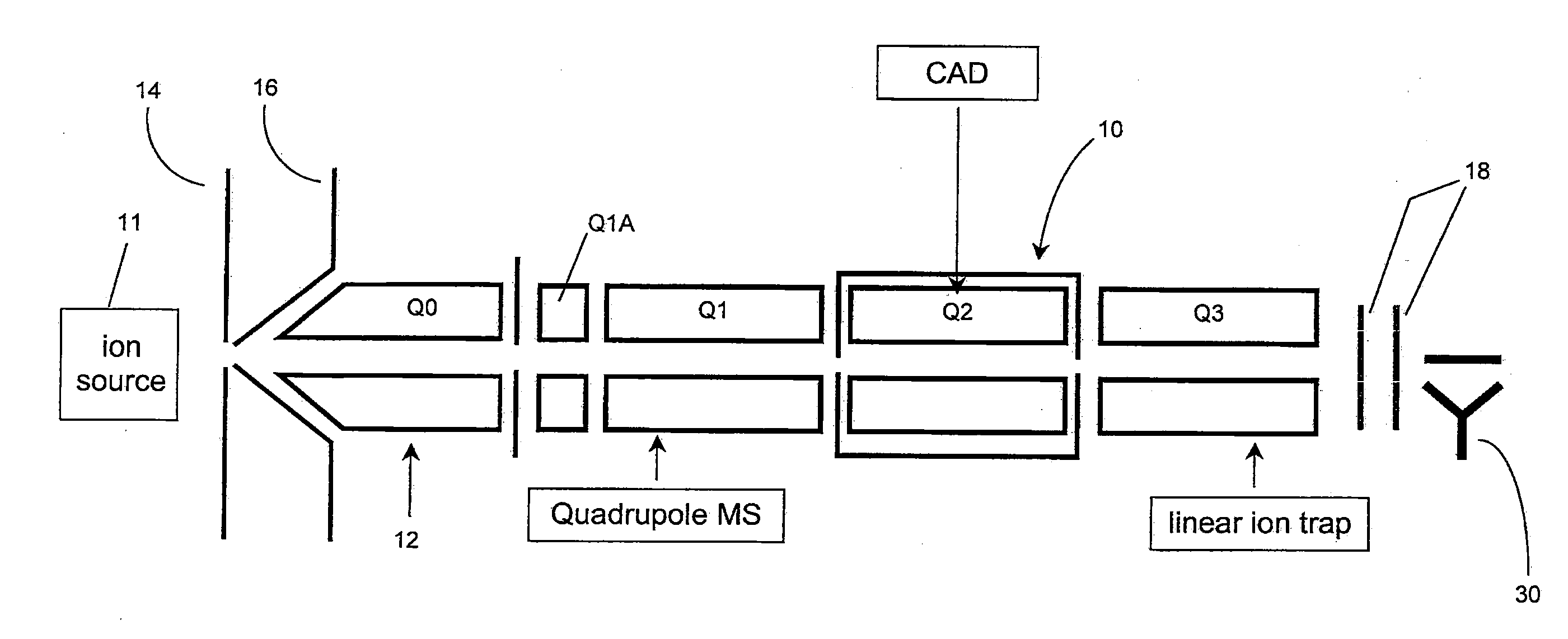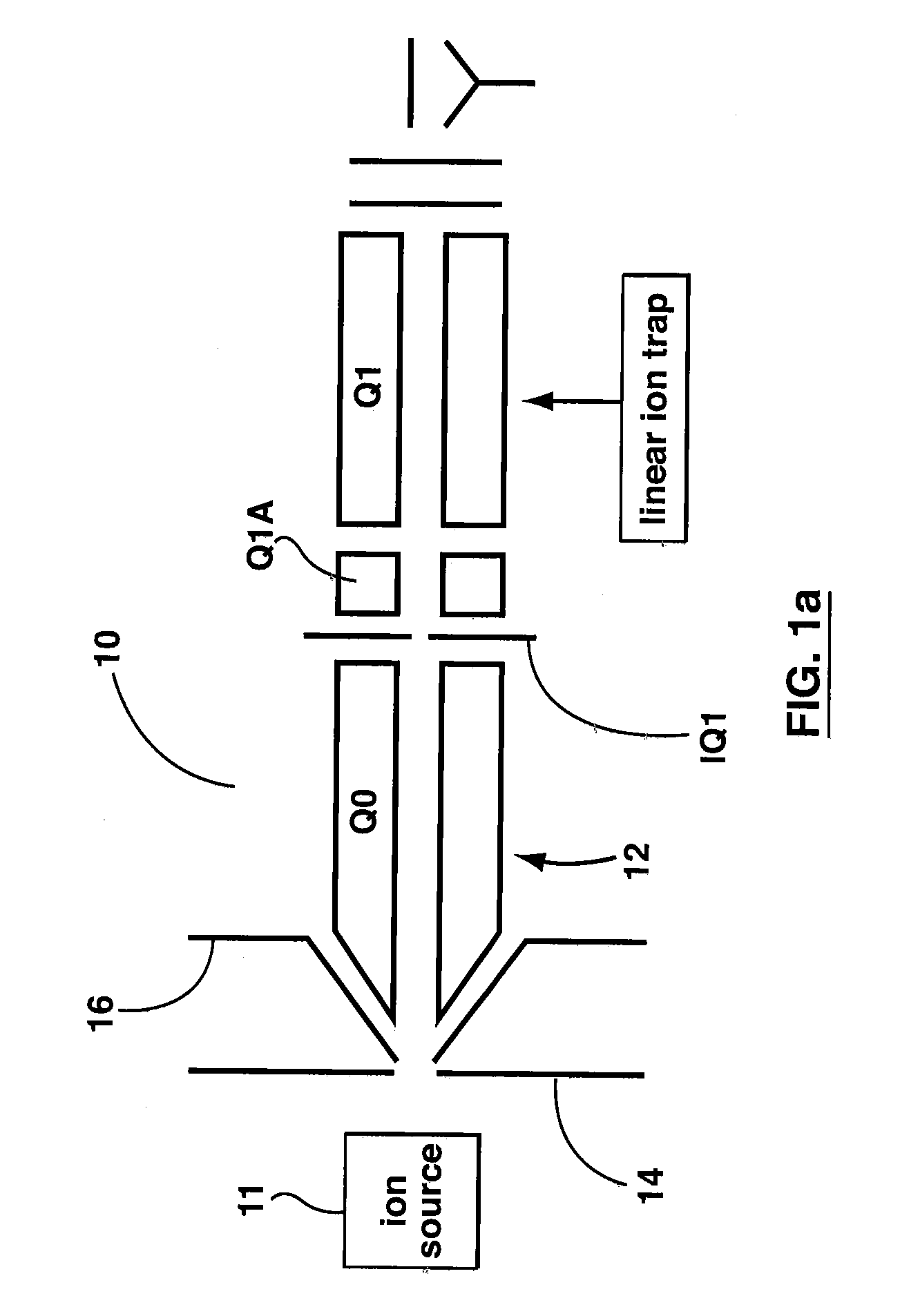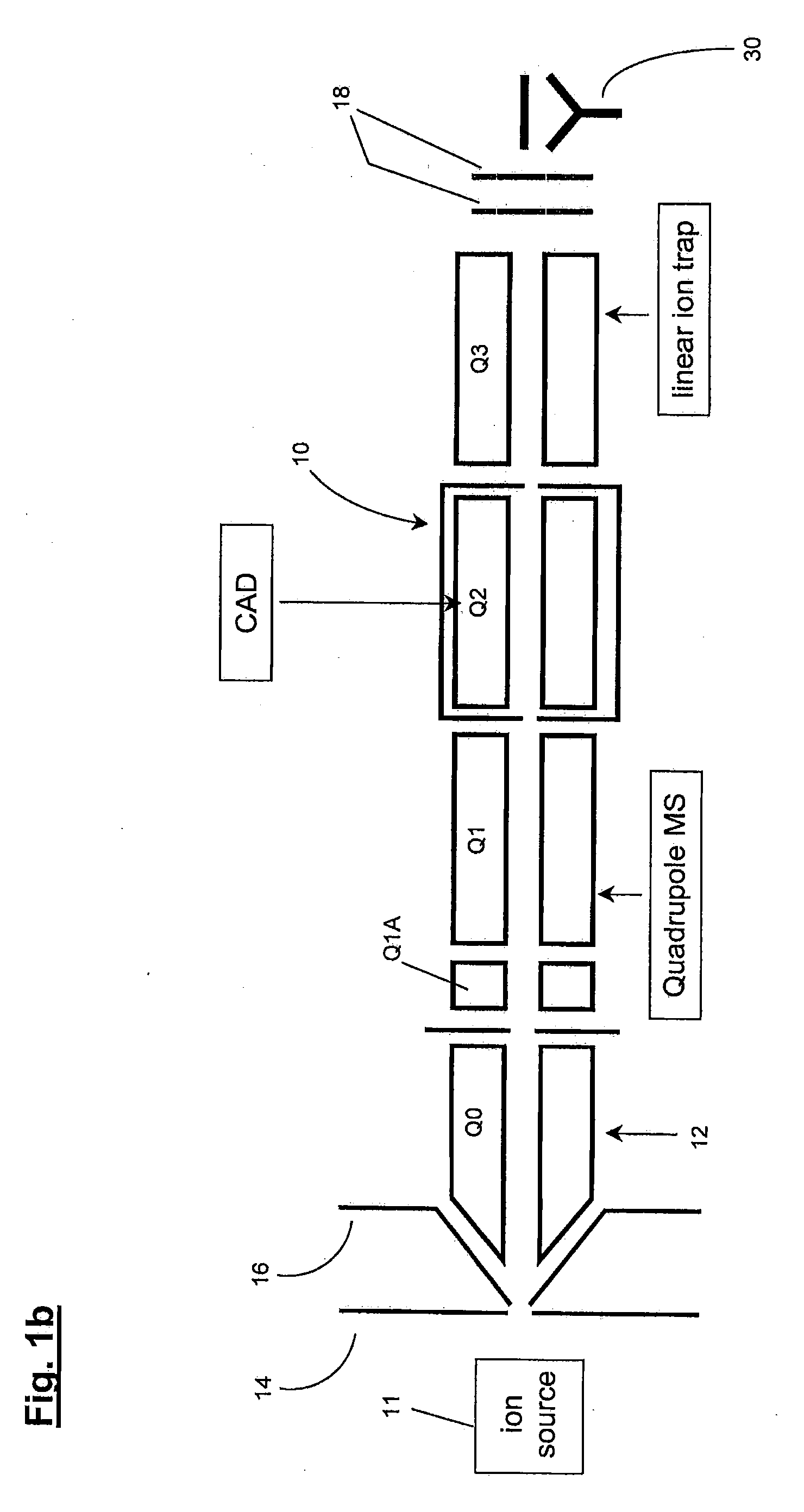Method of operating a linear ion trap to provide low pressure short time high amplitude excitation with pulsed pressure
a linear ion trap and pulse pressure technology, applied in the direction of spectrometer combinations, isotope separation, particle separator tubes, etc., can solve the problems of fragmentation of ions, insufficient amplitude, and inability to provide low pressure short time high amplitude excitation, so as to reduce the q reduce the mathieu stability q parameter, and reduce the amplitude of the rf trapping potential
- Summary
- Abstract
- Description
- Claims
- Application Information
AI Technical Summary
Benefits of technology
Problems solved by technology
Method used
Image
Examples
example 1
[0091]A comparison of the fragmentation of a caffeine ion, m / z=195, without, and with, injection of a neutral collision gas of neutral collision is shown in FIG. 11. The top spectrum (a) corresponds to the condition where no collision gas is injected during fragmentation, and it yields a 2.1% fragmentation efficiency when exciting the parent ions at 12.5 mV(0-pk) amplitude in a base pressure of 3.7×10−5 Torr. The bottom spectrum shows 13.1% fragmentation efficiency when exciting the same ion at an amplitude of 21.5 mV(0-pk) with the pulsed valve used to inject the collision gas. For each trial the excitation time was 25 ms. In this experiment the injection of the collision gas increased the fragmentation efficiency by more than a factor of six.
example 2
[0092]Without injection of the collision gas, less fragmentation for short excitation times was observed. Referring to FIG. 12, the fragmentation efficiency for a Lidocaine ion, m / z=235, with (open circles) and without (filled circles) collision gas injection, is shown. For an excitation time of 10 ms the fragmentation efficiency is about 10% without injection and about 75% with injection, a gain in fragmentation efficiency by a factor of about 7.5. For an excitation time of 25 ms the gain in efficiency drops to about 2.9, and at 100 ms the gain drops even further to about 1.3. The data shows that the fragmentation efficiency, with gas injection, for this ion does not improve significantly for excitation times beyond about 25 ms, whereas the fragmentation efficiency, without gas injection, for the same ion slowly improves for excitation times up to 150 ms. However, using the present teachings the same efficiency seen at 150 ms without collision gas can be obtained in about ...
example 3
Excitation Period
[0093]A plot of the gain in ion fragmentation efficiency under conditions of collision gas injection compared to conditions without gas injection for various m / z ratios for two different excitation periods is shown in FIG. 13. The ions fragmented were those listed in Table 2. Two data sets are shown corresponding to excitation times of 25 ms (filled circles) and 100 ms (open circles). For each measurement the excitation amplitude was selected to maximize fragmentation of the parent ion. The data of FIG. 13 shows that the observed gains in fragmentation efficiency are greatest for short excitation times and low ion masses.
PUM
 Login to View More
Login to View More Abstract
Description
Claims
Application Information
 Login to View More
Login to View More - R&D
- Intellectual Property
- Life Sciences
- Materials
- Tech Scout
- Unparalleled Data Quality
- Higher Quality Content
- 60% Fewer Hallucinations
Browse by: Latest US Patents, China's latest patents, Technical Efficacy Thesaurus, Application Domain, Technology Topic, Popular Technical Reports.
© 2025 PatSnap. All rights reserved.Legal|Privacy policy|Modern Slavery Act Transparency Statement|Sitemap|About US| Contact US: help@patsnap.com



